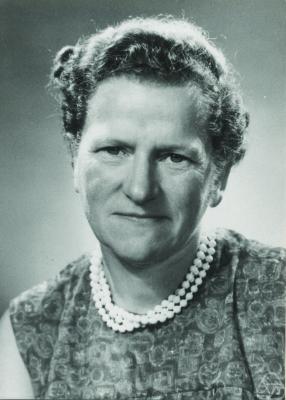Hanna Neumann facts for kids
Quick facts for kids
Johanna (Hanna) Neumann
|
|
|---|---|
 |
|
| Born |
Johanna von Caemmerer
12 February 1914 Lankwitz, Steglitz-Zehlendorf
|
| Died | 14 November 1971 (aged 57) |
| Nationality | German |
| Citizenship | British |
| Alma mater | University of Berlin, University of Göttingen, University of Oxford |
| Known for | Group theory |
| Spouse(s) | Bernhard Neumann |
| Children | Peter M. Neumann |
| Awards | Fellowship of the Australian Academy of Science (1969), Fellowship of the Australian College of Educators (1970). |
| Scientific career | |
| Fields | Mathematics |
| Institutions | University of Hull, School of Mathematics, University of Manchester, Australian National University |
| Thesis | Sub-group Structure of Free Products of Groups with an Amalgamated Subgroup |
| Doctoral advisor | Olga Taussky-Todd |
Johanna (Hanna) Neumann was a brilliant mathematician born in Germany. She was born on February 12, 1914, and passed away on November 14, 1971. Hanna is well-known for her important work in a special area of mathematics called group theory.
Contents
Hanna's Early Life and Education
Hanna Neumann was born in a place called Lankwitz, which is now part of Berlin, Germany. She was the youngest of three children. Her father died very early, during the first days of World War I. This meant her family did not have much money. To help out, Hanna started tutoring other students when she was only 13 years old.
In 1922, she began attending a girls' grammar school. She finished school in 1932 and then started studying at the University of Berlin. She studied many math subjects, as well as physics, psychology, literature, and law. Because she worked so hard in her first year, she received a special award. This award helped her pay for her studies and gave her a part-time job in the university's math library.
Facing Challenges During Her Studies
In 1933, a difficult time began in Germany when the Nazis came to power. Hanna became friends with another student named Bernhard Neumann, who was Jewish. Because of the new rules, Bernhard had to move to England in August 1933.
Hanna continued her studies in Germany. She was part of a group of students who tried to protect Jewish professors. They made sure that only real students attended lectures, preventing others from causing trouble. Because of these actions, Hanna lost her job at the math institute. However, she was still able to get full financial help for her studies.
She finished her first degree in 1936 with excellent grades in math and physics. In 1937, she began working on her advanced degree (Ph.D.) at the University of Göttingen.
Marriage and Moving to England
During this time, Hanna and Bernhard kept in touch secretly through friends. They could only meet once in Denmark in 1936. In July 1938, Hanna moved to England to be with Bernhard. They got married in December 1938 and later had five children. In 1940, the Neumann family moved to Oxford.
Hanna completed her Ph.D. in group theory in 1944 at the University of Oxford. Her research was about the structure of groups. Later, the University of Oxford gave her another special degree, a D.Sc., for all her published math papers.
Hanna's Career and Teaching
After becoming a British citizen, Hanna started teaching at the University of Hull in 1946. In 1958, she became a lecturer at the Mathematics Department in Manchester. She also spent a year in New York City at the Courant Institute of Mathematical Sciences with her husband.
In 1963, the Neumanns moved to Australia to work at the Australian National University in Canberra. Hanna became a professor of pure mathematics in 1964. She also served as the dean of students from 1968 to 1969, helping students with their academic and personal lives.
Teaching Style and Impact
At the Australian National University, Hanna helped create new math courses. She wanted to show students how exciting and interesting mathematics could be. She designed courses that helped students understand very complex ideas by using clear examples and helpful exercises. She believed in making abstract math concepts easy to learn.
Hanna was also a supervisor for many students. She guided 10 students who were working on their doctoral degrees. She also has 51 academic "descendants," meaning students who were supervised by her students, and so on.
Recognition and Legacy
Hanna Neumann was highly respected for her contributions to mathematics.
- In 1969, she was chosen as a Fellow of the Australian Academy of Science. This is a very high honor for scientists in Australia.
- In 1970, she became a Fellow of the Australian College of Educators.
- Two buildings at the Australian National University are named after her to honor her work.
- A street in Canberra, Australia, called Neumann Place, is also named in her honor.
Hanna Neumann passed away in 1971 while on a lecture tour in Canada. Four of her five children also became mathematicians, including Peter M. Neumann.
See also
 In Spanish: Hanna Neumann para niños
In Spanish: Hanna Neumann para niños

